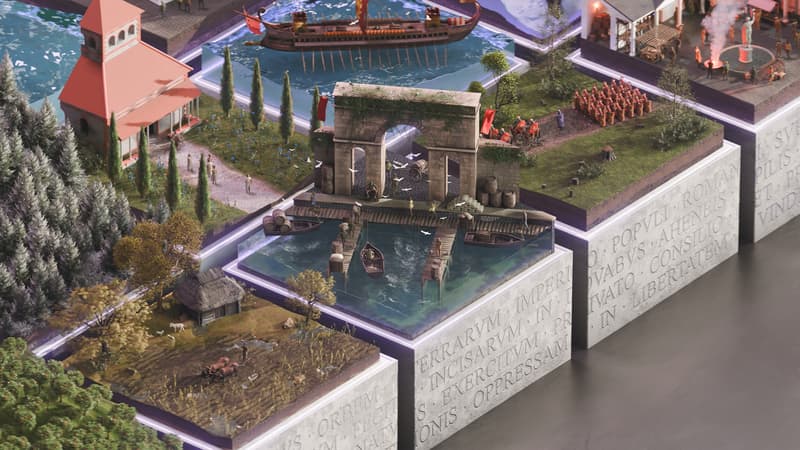Before Rome followed Brian’s advice, brilliantly played by Graham Chapman, and returned home, his empire had time to cover Europe and the edges of the mare. A military, commercial, cultural and political empire, which has left gigantic buildings enough history for centuries and thousands of graffiti, mosaics, fragments of recorded amphorae … Today, 1,500 Latin inscriptions every year every year, leading a history, a detail, every day … a “giant puzzle” that artificial intelligence (ia) now helps history.
A often damaged treasure
Omnipresent in the Roman world, inscriptions “are beautiful for historians because they offer a direct testimony of ancient thought, language, society and history. They have been written by people of all social classes, in all subjects. Therefore, it is not a story only told by elites,” says Yannis Assael, a specialist of AI in Google Deepmind.
But “these texts are often damaged.” And “we generally know where or when they were written,” said the researcher, co-designator of “Aeneas”, Aeée’s Latin name.
Presented on Wednesday by a publication in Nature magazine, this model is a network of multimodal generative neurons, a type of artificial intelligence capable of identifying complex relationships between various types of data.
In this case, the links between different Latin inscriptions to contextualize them, date and locate them within a world that has extended for 2,000 years of 5 million square kilometers.
Studying history through inscriptions, “is like solving a gigantic puzzle. It cannot be resolved with a single isolated piece, even if you know its color or its detail shape. You must find the pieces that connect to it,” explains Thea Sommerschield, model co-contractor and epigraphist at the University of Nottingham (United Kingdom).
16 million characters
To find the details that will allow these connections, these registration specialists are looking for “parallels” in other texts: words, names, formulations, similar references.
Titan’s work. Because these historians must “compare each registration with potentially hundreds of parallels”, which requires “exceptional erudition” and “access to rich libraries and museum collections” at the expense of the “tedious manual research”, underline the designers of the AEAS.
To train their model, they used three existing databases on Latin epigraphy. They also recovered images of certain inscriptions, to allow AI not only to trust the text, but also in physical elements (material, iconography …) to locate them better.
The final corpus contains 176,861 inscriptions, representing 16 million characters. About 5% are accompanied by images.
Aeneas can identify relevant parallels to estimate the location of an inscription between the 62 Roman provinces, its appointment for decades and also generate several restoration hypotheses for the missing parts. The model also indicates which parts of the text and the image have the most influenced predictions.
To prove it, his designers asked him to analyze the “Swelling Divi Augusti”, a story in the first person in the life of Augustus, the first Roman emperor. The dating of this will, written in Rome and then copied through the Empire, is still debated among historians.
The text, being plagued with exaggerations, dates without relevance and erroneous geographical reference points, did not catch Aeneas, which depended on subtle chronological indices such as archaic spelling. And predicted two possible dates, corresponding to those debated by historians.
About twenty of them, who tried the model, judged the parallel identified by useful Aeneas as the starting point for work in 90% of cases, according to Google Deepmind. Restoration and geographical attribution tasks gave better results when historians worked with Aeneas, surpassing both humans and artificial intelligence.
“Since their progress, (AI) seems to contradict educational objectives, with the fear that trusting them obstruct critical thinking instead of strengthening knowledge. When developing Eneas, we show how this technology can really support human science,” said Robbe Wulgaert, a professor of artificial intelligence in synthescolge of Gand de Gand, the study.
Source: BFM TV


